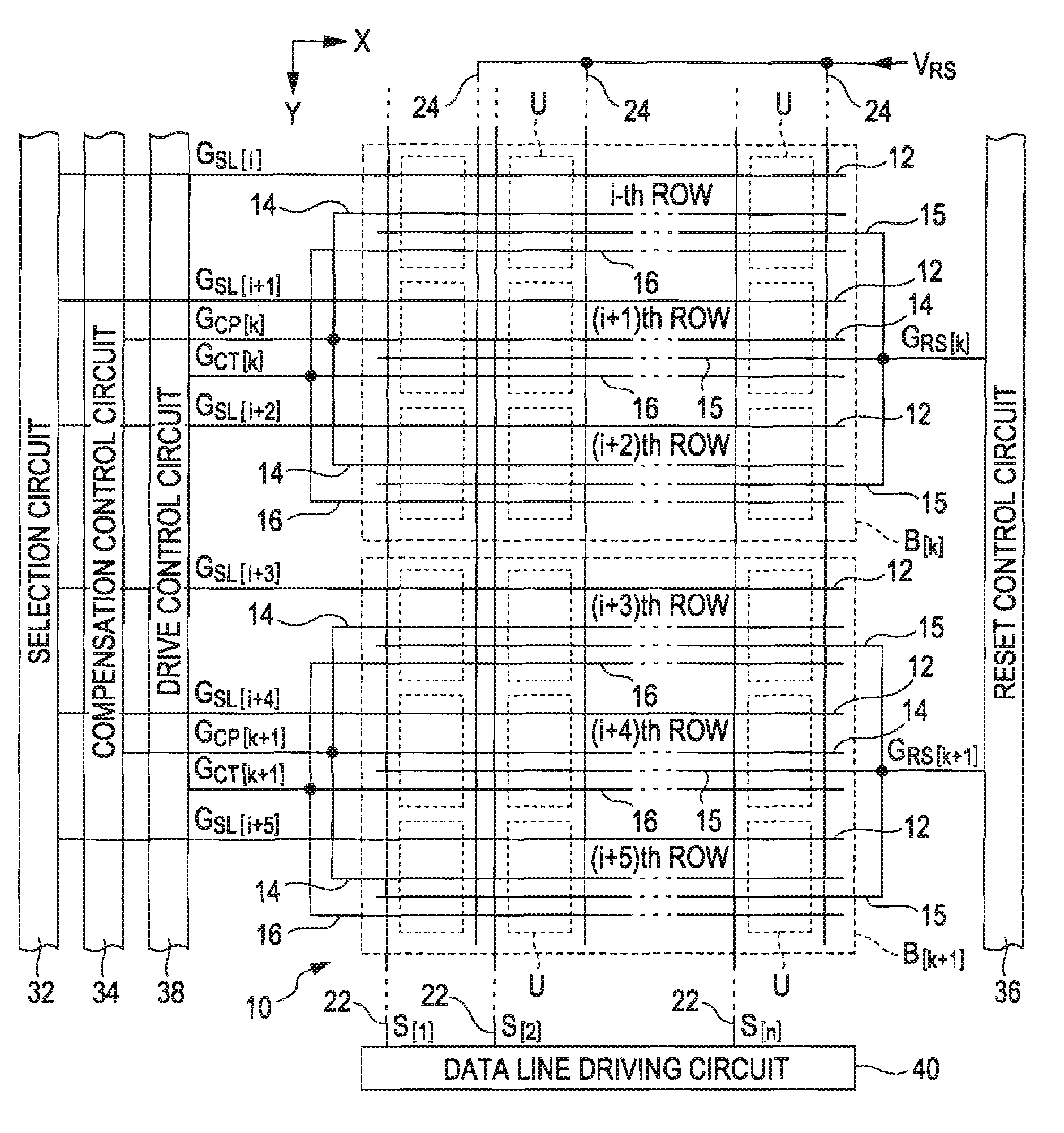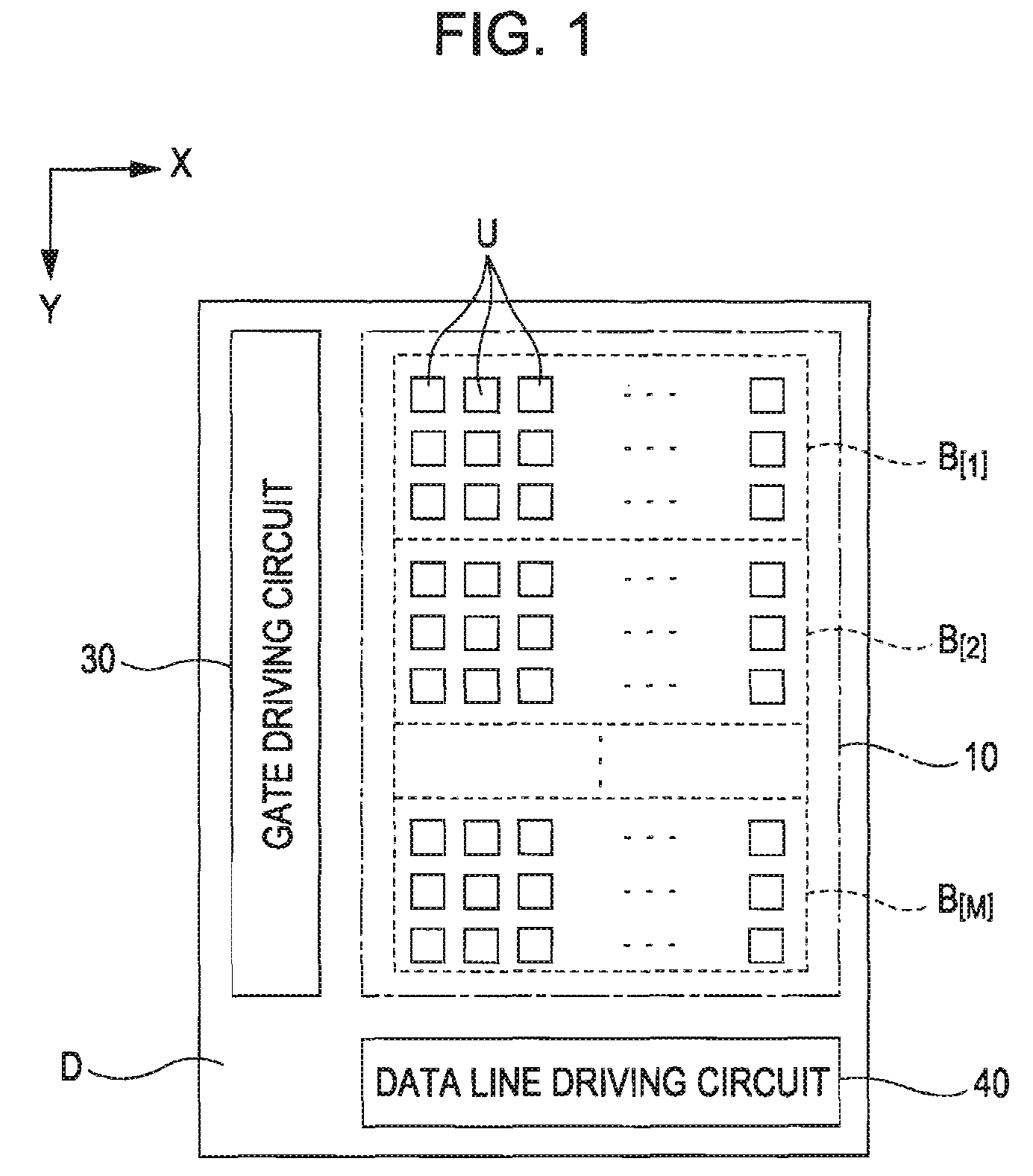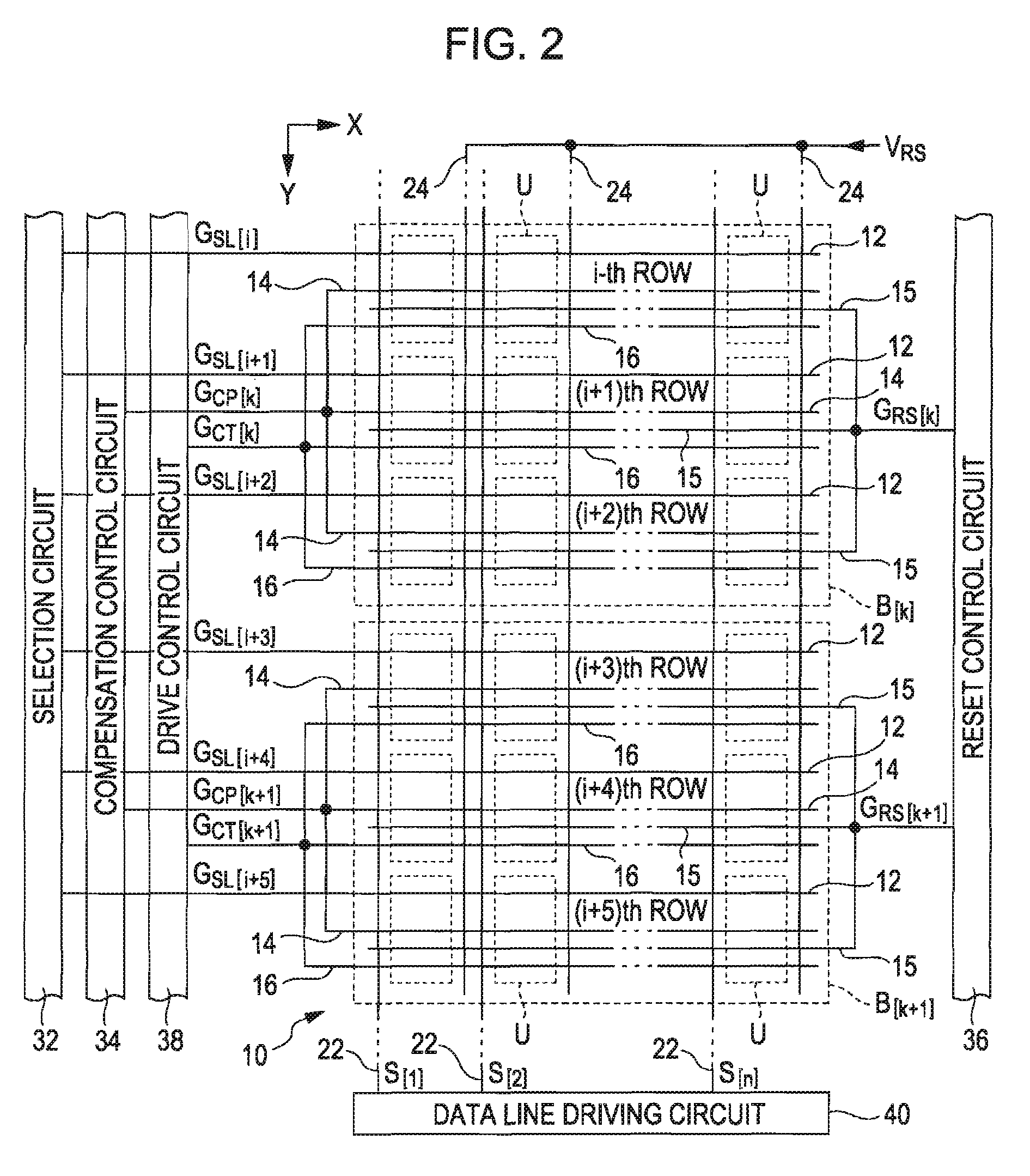Electro-optical device and electronic apparatus
a technology of electronic equipment and optical elements, applied in static indicating devices, instruments, electroluminescent light sources, etc., can solve the problems of reducing yield, affecting the desired operation of each unit circuit, and reducing the width of the window frame, so as to achieve the effect of suppressing the size of the driving circui
- Summary
- Abstract
- Description
- Claims
- Application Information
AI Technical Summary
Benefits of technology
Problems solved by technology
Method used
Image
Examples
first embodiment
A: First Embodiment
A-1: Configuration of Electro-optical Device
[0078]FIG. 1 is a block diagram of a configuration of an electro-optical device according to a first embodiment. The electro-optical device D is an image display device. The electro-optical device D includes an element array area 10, a gate driving circuit 30, and a data line driving circuit 40. A plurality of unit circuits (pixel circuits) U are arranged in the element array area 10. The gate driving circuit 30 drives the unit circuits U.
[0079]In the element array area 10, groups of n unit circuits U that are arranged in an X direction are arranged parallel to each other in a Y direction perpendicular to the X direction over m rows (n and m are natural numbers). That is, the plurality of unit circuits U are arranged in a matrix of horizontal m rows by vertical n columns. The unit circuits U are separated into M (M=m / 3) groups B[1] to B[M], each including three successive rows of unit circuits U in the Y direction. That ...
second embodiment
B: Second Embodiment
[0114]The following will describe a second embodiment of the invention. Note that the same reference numerals are assigned to the components of the present embodiment having the same or similar operation and function as those of the first embodiment, and a detailed description thereof is omitted where appropriate.
[0115]FIG. 7 is a block diagram showing a relation between each unit circuit IT and the gate driving circuit 30 according to the present embodiment. FIG. 8 is a timing chart showing waveforms of signals that are supplied to the unit circuits U. FIG. 7 shows only one group B[k] as an example.
[0116]As shown in FIG. 7 and FIG. 8, the drive control circuit 38 in the present embodiment generates drive control signals GCT[1] to GCT[m] for the corresponding m rows that form the element array area 10. The drive control signal GCT[i] is a signal that is in a low level during the non-selection period TOFF[i] when the start point is separately set on a row to row b...
third embodiment
C: Third Embodiment
[0120]The following will describe a third embodiment of the invention. Note that the same reference numerals are assigned to the components of the present embodiment having the same or similar operation and function as those of the first embodiment or second embodiment, and a detailed description thereof is omitted where appropriate.
[0121]FIG. 9 is a block diagram showing a relation between each unit circuit U and the gate driving circuit 30 according to the present embodiment. As shown in FIG. 9, the electro-optical device D of the present embodiment includes m regulator circuits 60 corresponding to the respective rows in addition to the components of the second embodiment. The i-th regulator circuit 60 is a device that delays the control signal G[k,i] output from the i-th NAND circuit 50, that is, the logic signal, relative to the compensation control signal GCP[k]. The regulator circuit 60 of the present embodiment includes two buffers 62 that are arranged in a...
PUM
 Login to View More
Login to View More Abstract
Description
Claims
Application Information
 Login to View More
Login to View More - R&D
- Intellectual Property
- Life Sciences
- Materials
- Tech Scout
- Unparalleled Data Quality
- Higher Quality Content
- 60% Fewer Hallucinations
Browse by: Latest US Patents, China's latest patents, Technical Efficacy Thesaurus, Application Domain, Technology Topic, Popular Technical Reports.
© 2025 PatSnap. All rights reserved.Legal|Privacy policy|Modern Slavery Act Transparency Statement|Sitemap|About US| Contact US: help@patsnap.com



